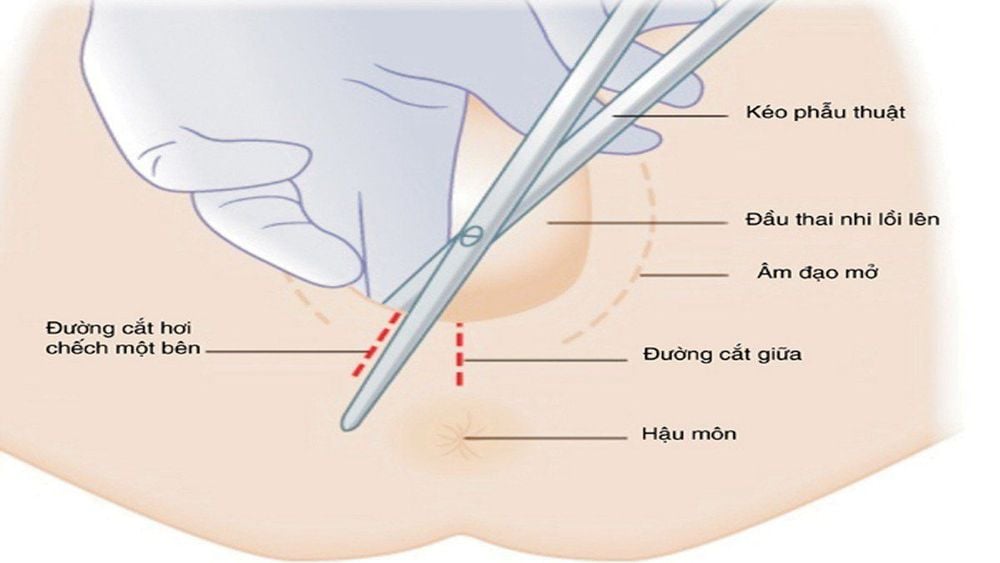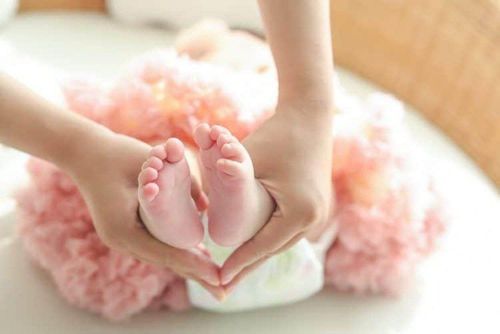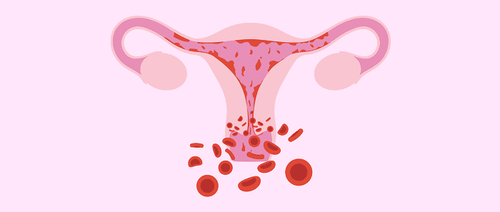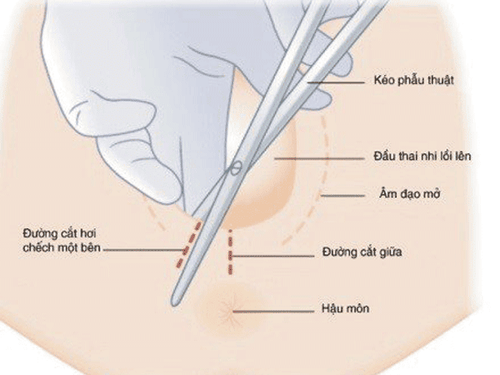This is an automatically translated article.
The article was professionally consulted by a Doctor of Obstetrics and Gynecology - Vinmec Central Park International General HospitalMost pregnant women giving birth vaginally, especially giving birth for the first time, are often prescribed by doctors to perform an episiotomy. The purpose of this procedure is to widen the vagina and vulva, making it easier for the fetus to come out, and also help prevent tearing of the perineum, causing cosmetic loss later.
1. Structure and function of the perineum
1.1. Structure of the Perineum The perineum is a part of the female genitals, the tissue that lies between the vagina and anus. The size of the perineum is about 3 - 5 cm and plays an important role in a woman's reproductive function.1.2. The role of the perineum The perineum has the function of protecting and supporting the important organs of the pelvis, including the uterus, vagina, rectum, and bladder. This place is also likened to the "gate of intercourse" - the place where the man's sperm is received before entering the uterus, and also plays an essential role in meeting the sexual needs of women.

Rạch tầng sinh môn giúp con yêu thuận lợi chào đời
Besides cosmetic problems, perineal tear also affects the quality of sexual activities, reduces desire during intercourse, causes burning pain, and difficult to achieve pleasure. Even some women fall into a state of confusion, fear, sadness, apathy, ... adversely affecting family happiness, just because of the perineal tear.
Trắc nghiệm: Chỉ khâu tầng sinh môn sẽ tự tiêu sau bao lâu?
Khâu tầng sinh môn sau sinh bằng đường âm đạo là thủ thuật sản khoa đơn giản nhanh chóng, nhẹ nhàng. Chỉ tự tiêu khâu tầng sinh môn là loại chỉ khâu tầng sinh môn cho sản phụ sau sinh, sẽ tự biến mất sau 1 thời gian. Nhiều chị em thắc mắc không biết “chỉ khâu tầng sinh môn sẽ tự tiêu sau bao lâu?”. hãy cùng trả lời nhanh 3 câu hỏi trắc nghiệm sau.2. Why is an episiotomy to give birth?
In fact, when the mother approaches the time of labor, the genitals will gradually expand the muscles, the perineum will expand naturally so that the newborn can easily get out. However, not all pregnant women have such advantages. The expansion and relaxation also have certain limits. Moreover, delivery becomes more difficult especially when the baby's head is too big or the baby has a lot of weight. To handle such situations, doctors will have to perform a small procedure, which is an episiotomy.Episiotomy is performed by making a short cut just enough above the perineum to widen the area. From there, the baby is born quickly and the mother does not have to push too hard, leading to tearing of the perineum.

Tầng sinh môn bị rách gây ra nhiều vấn đề khó giải bày
3. When does the doctor appoint an episiotomy for the mother?
Although an episiotomy is a relatively minor obstetric procedure and is often performed in women who are pregnant with multiples, that does not mean that every woman needs it. .
For some pregnant women, when the doctor determines that the fertility is good or the fetus is small, this procedure can be skipped. However, in the following cases, it is advisable to actively perform an episiotomy to support an easier delivery, specifically pregnant women:
Having the flexibility and elasticity of the perineum Poor subjects Pregnant women over the age of 35 Have cardiovascular disease, have gestational hypertension Have vaginitis or perineal edema with edema The mother's uterus muscles do not contract with enough force The baby's head has sugar Large glass, difficult to get out. The cervix has widened and the fetal head is low, but there are signs of fetal distress, the fetus may be stillborn.
4. Perineal incision procedure
Before performing an episiotomy, a woman is usually given a local anesthetic injection in the perineum. For pregnant women who have had a painless delivery using epidural anesthesia, there is no need to numb the perineum area anymore, because this area is already numbed. Sometimes an episiotomy is performed when a woman has signs of uterine contractions and pushes to give birth when the contractions are at their peak. At that time, the birth process needs more intensive intervention to support the newborn out in a more favorable way.
Thủ thuật rạch tầng sinh môn
5. What are the risks of an episiotomy?
Episiotomy is not dangerous to the life of the pregnant woman, but it does affect the birth process and life after birth. Episiotomy increases the risk of infection and the incidence of anemia during delivery due to maternal blood loss.Women undergoing this procedure need a longer recovery period. After giving birth, they often experience loss of control and pain during urination, even after the incision has healed. At the same time, the episiotomy also carries a risk of serious tearing of the vulva.
In addition, if the mother does not ensure the care of the perineal stitches after the incision, it may cause the perineal stitches to tear, break the thread, cause pain, bleeding, and infection. Therefore, you need to consult with your doctor to guide you to take care of the perineal stitches after giving birth properly.
6. How not to have an episiotomy during a normal birth?
Perineal incision is really an unforgettable experience for pregnant women when giving birth. The assessment of whether an episiotomy is necessary during childbirth, more or less, depends on many factors.
Tập thể dục đều đặn giúp mẹ bầu cải thiện khả năng sinh nở
Add good fats in your meals (such as vegetable oil, fish oil, avocado, wheat germ...) : Helps improve skin elasticity and moisture. Perineal massage: It is both good for overall health and increases the elasticity of the perineum. It is recommended to do 5 minutes a day from 6-8 weeks before the due date (about 32 - 34 weeks of pregnancy). Kegel exercises: Not only help women improve their fertility, but also increase the feeling of "love" and regain confidence after giving birth. Hard exercise (especially gentle walking at the end of pregnancy): Helps the fetus easily fall into the pelvic floor, ideal fetal position, favorable for birth. Giving birth is never easy for a pregnant mother. Especially for women who have given birth for the first time, the possibility of having an episiotomy is often higher. Besides, during labor, a series of problems can occur, threatening the life of the pregnant mother and the fetus.
Customers can refer to the Package Maternity Care Program at Vinmec International General Hospital with a route of scientific examination for pregnant mothers before - during - after birth with experienced doctors in the field of pregnancy. area of Obstetrics and Gynecology, ensuring close follow-up to help women have a healthy pregnancy, safe labor and remove the obsession about episiotomy during childbirth.
Please dial HOTLINE for more information or register for an appointment HERE. Download MyVinmec app to make appointments faster and to manage your bookings easily.













